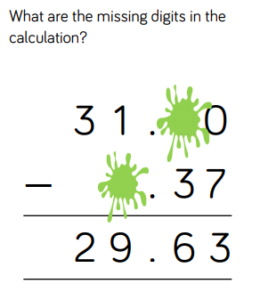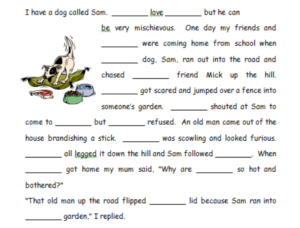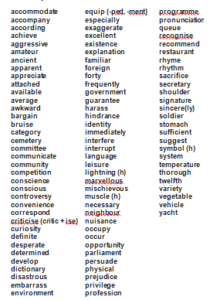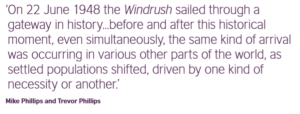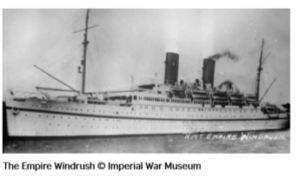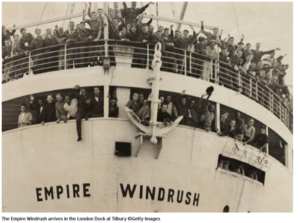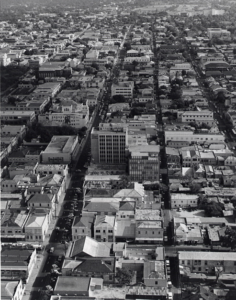Hello Year 5,
It’s been lovely to catch up with most of you and find out what you have been up to. It’s been very odd teaching again but without our Year 5 classes. We have been teaching different year groups, who have been lovely, but we still miss seeing your smiley faces and listening to your stories.
This half term we would have been studying ‘coasts’ as our topic. If any of you do manage to get to the beach, have a look for signs or erosion around the area. What defences have been put in place to stop the erosion of the beach – groynes, sea walls, gabions/ rock armour or a mixture of defences? If you can see a headland jutting into the sea, are there caves formed; any arches, stacks or stumps? Has a bay been created?
Don’t forget to email through your one favourite piece of work so that we can see all of the great learning you have done.
This week’s tasks are as follows:
Reading and Writing:
For your English work this week you will once again be using the Oaks National Academy website. The focus is on persuasive writing so try and think back to all of the great persuasive skills you learned in Year 5 when you wrote your own persuasive speeches on your favourite superhero and when you tried to persuade tourists to visit Pandora. Good luck!
Reading
Please continue to ensure that you are reading an age appropriate book for at least 20 minutes each day. It is so important to help you build your vocabulary and develop your fluency and stamina!
Lesson 1: To infer from the text
https://classroom.thenational.academy/lessons/persuasive-letter-reading-comprehension-inference
Lesson 2: Reading comprehension – to clarify word meaning
https://classroom.thenational.academy/lessons/persuasive-letter-reading-comprehension-word-meaning
Writing
Lesson 3: To identify the features of a text
https://classroom.thenational.academy/lessons/persuasive-letter-identifying-the-features-of-a-text
Lesson 4: Grammar focus – using a list of 3 in a sentence.
https://classroom.thenational.academy/lessons/persuasive-letter-spag-focus-list-of-three
Lesson 5: Writing a persuasive letter.
https://classroom.thenational.academy/lessons/persuasive-letter-write-a-persuasive-letter
Extra challenge:
Plan a broadcast
Imagine that you have the chance to set up a new club for children. This could be a ‘lockdown’ club or a club that could take place when we all return to school. A local radio show has given you 3 minutes to persuade your audience that the club is a good idea.
Plan the content of your broadcast. Make sure you give some good reasons why the club should be set up, a range of persuasive language and strong conjunctions and connectives to link your points together.
Rehearse the broadcast. Think carefully about the expression in your voice, the speed at which you present and maintain good eye contact with your audience.
Please feel free to email your persuasive recordings to our class email page.
Maths:
Task 1: 20 minutes of times tables work every day. Use TT Rockstars to help you practise.
Task 2: Arithmetic task and times tables task on Sumdog.
Task 3: There are 2 activities set on My Maths to complete. Use your login details to get onto the website.
Task 4:
Taken from Oak National Academy
Lesson 1 – watch the video and complete tasks given within it
https://classroom.thenational.academy/lessons/to-solve-problems-related-to-decimals/activities/2
Complete the activities based on the lesson
https://classroom.thenational.academy/lessons/to-solve-problems-related-to-decimals/activities/3
Lesson 2 – complete the quiz from the previous lesson
https://classroom.thenational.academy/lessons/to-investigate-multiplying-decimals/activities/1
Watch the video and complete tasks given within it
https://classroom.thenational.academy/lessons/to-investigate-multiplying-decimals/activities/2
Complete the activities based on the lesson
https://classroom.thenational.academy/lessons/to-investigate-multiplying-decimals/activities/3
Lesson 3 – complete the quiz from the previous lesson
https://classroom.thenational.academy/lessons/to-multiply-decimals-by-whole-numbers/activities/1
Watch the video and complete tasks given within it
https://classroom.thenational.academy/lessons/to-multiply-decimals-by-whole-numbers/activities/2
Complete the activities based on the lesson
https://classroom.thenational.academy/lessons/to-multiply-decimals-by-whole-numbers/activities/3
Lesson 4 – complete the quiz from the previous lesson
Watch the video and complete tasks given within it
Complete the activities based on the lesson
Task 5:
Taken from HIAS problem solving:
Challenges:
From White Rose Y5 Maths:
Spellings and Grammar:
Task 1: Spelling task on Sumdog.
Task 2: Grammar task on Sumdog.
Task 3:
To practise using pronouns correctly.
What is a pronoun?
Can you think of some examples?
What is the difference between singular and plural pronouns?
Continue to learn the spellings on the Year 5/6 Spelling List – do a few at a time.
Family Science Activity
Balloon Car Racers
https://www.rigb.org/families/experimental/balloon-car-racers – to watch the video
The activity – Make cars which are propelled by balloon power.
ExpeRiment with designs and see what factors affect how fast or how far your car goes.
Learn how a balloon car works just like a rocket.
https://www.rigb.org/docs/ballooncarracers_infosheet_1_1.pdf – to view the information sheet
What to do:
- Make a balloon car based on the instructions Mark gives in the video.
- Decide how you will judge what makes a ‘good’ car – is it how far it goes or how fast it goes?
- Investigate what happens if you have bigger or smaller wheels (you can use other types of lids or make wheels from cardboard and use blu-tac or glue to attach them to the kebab skewers).
- Investigate what happens if you change the design of your car in other ways – you can watch the video again for inspiration for other designs.
Going further challenge:
- Measure how far your car travels using a tape measure.
- Time how fast your car travels ½ a metre – would double the speed be the time that your car would travel 1 metre? Test it out.
- You can find the speed of your car in metres per second using a stopclock and a tape measure: Measure the distance the car travels (in metres) then dividing that distance by the time it took to travel (in seconds).
Topic – The Windrush
Watch the BBC Newsround clip describing the arrival of the Empire Windrush.
https://www.bbc.co.uk/newsround/43793769
Background
Between 1948 and 1970 nearly half a million people left their homes in the West Indies to live in Britain. The West Indies consists of more than 20 islands in the Caribbean, including Jamaica, Barbados and Trinidad. These people changed the face of modern Britain. They were all British citizens and, although they had never lived in Britain before, they had the right to enter, work and settle here if they wanted to.
West Indians came to Britain for many different reasons. Some were seeking better opportunities for themselves and their children. Some came to work for a while, save money and return home. Some had been recruited because Britain was short of workers to run the transport system, postal service and hospitals. Other West Indians were returning soldiers who had fought for Britain during the Second World War (1939-1945).
Not all white Britons welcomed the black Britons. Many West Indians found that the colour of their skins provoked unfriendly reactions. For example, despite the desperate shortage of labour, some still found it difficult to get good jobs. Often they were forced to accept jobs which they were over-qualified for, or they were paid less than other white workers.
West Indians also experienced difficulties in finding suitable places to live. Since few had much money, they had to find cheap housing to rent near to their workplace. This was often in the poor inner cities. Even if they did have enough money to rent better quality housing, many had to face the fact that some landlords refused to rent to black people. They would be confronted with insulting signs in house windows that said ‘Rooms to Let: No dogs, no coloureds’. This meant that a lot of West Indians were forced to rent homes in the most rundown areas.
In 1958, in areas where larger numbers of West Indians lived, there were outbreaks of violence against them. In particular, in Nottingham and London mobs of white people attacked black people in the streets, smashing and burning their homes.
West Indians had been invited to come to Britain, so they also felt that it was their home too. To be discriminated against was a shock which they had not been prepared for. Some returned to the West Indies, but many remained – despite the difficulties they faced. They have worked hard and made a contribution to British life.
Jamaican village scene c.1950
A large Jamaican city c.1950
City Square, Leeds. 1949
Oxford Street, London. 1960’s
Task 1:
Imagine you are one of the passengers who came to live in Britain on the Windrush. Write a letter home to your family in the West Indies describing your arrival in Britain (expectation/ reality), how people are treating you (good / bad) and what Britain is like compared to home (use the photographs to help).
Life for Caribbean Immigrants Today
Today, their descendents and new immigrants to the country can still suffer the effects of discrimination and racism, which may not always be obvious. For example, they may find it more difficult to get jobs or receive the same standards of justice as white British people.
The Windrush Scandal
Some of the effects of racism are more obvious. Recently the British government was forced to apologise for what has been called the ‘Windrush Scandal’, in which people who have lived in Britain ever since immigrating decades ago have been wrongly arrested, denied legal rights, threatened with deportation and sometimes even wrongly deported from the UK by the Home Office.
Task 2:
Around the body outline, describe how you would feel if you have lived in Britain for decades but still did not have the same rights as every other British person and the possibility of deportation back to the West Indies.
Topic – India
L.O: To research the key features of a contrasting country.
As part of our country study we would have been researching India, ready for the carnival. Over the coming weeks we will give you areas of research for you to find details and put them together in an interesting way of your choice.
Over the next week, please continue to research these NEW areas:
The culture of India – music, dancing, art food…
The religions followed in India – different religions and the way they are followed.
Any festivals celebrated in India – some festivals may have religious links.
Websites to help:
https://www.kids-world-travel-guide.com/india-for-kids.html
https://www.bbc.co.uk/bitesize/clips/z4fr87h
https://kids.kiddle.co/Indian_religions
https://parenting.firstcry.com/articles/15-popular-festivals-of-india-interesting-facts-for-kids/
Music
Go to the website below and watch Naomi Wilkinson’s video about Grazyna Bacewicz.
https://www.bbc.co.uk/teach/ten-pieces/classical-music-grazyna-bacewicz-overture/zf2k382
|
Grażyna Bacewicz learnt the violin and the piano as a child – and, throughout her life, she enjoyed composing music for both instruments, including piano sonatas and seven violin concertos.
www.bbc.co.uk
|
Why was Grazyna Bacewicz considered a musical trail blazer?
Now listen to the whole piece in the second video. Can you hear the morse code pattern v …- for victory?
Why not try creating your own secretive rhythms
eg. This is top secret.
Don’t tell a soul.




